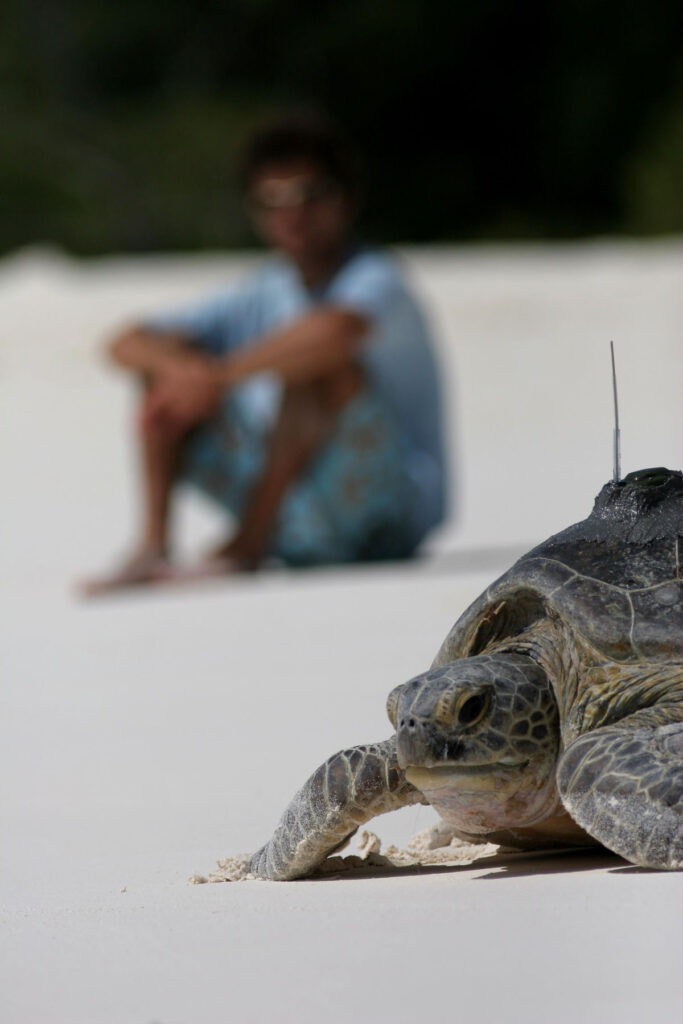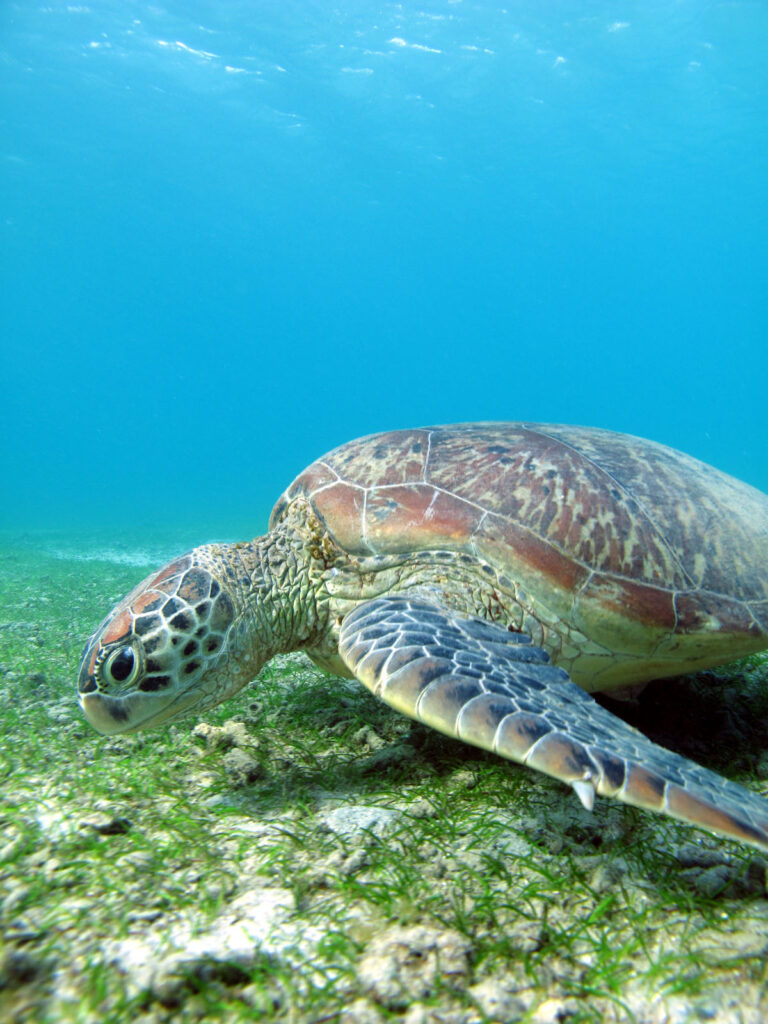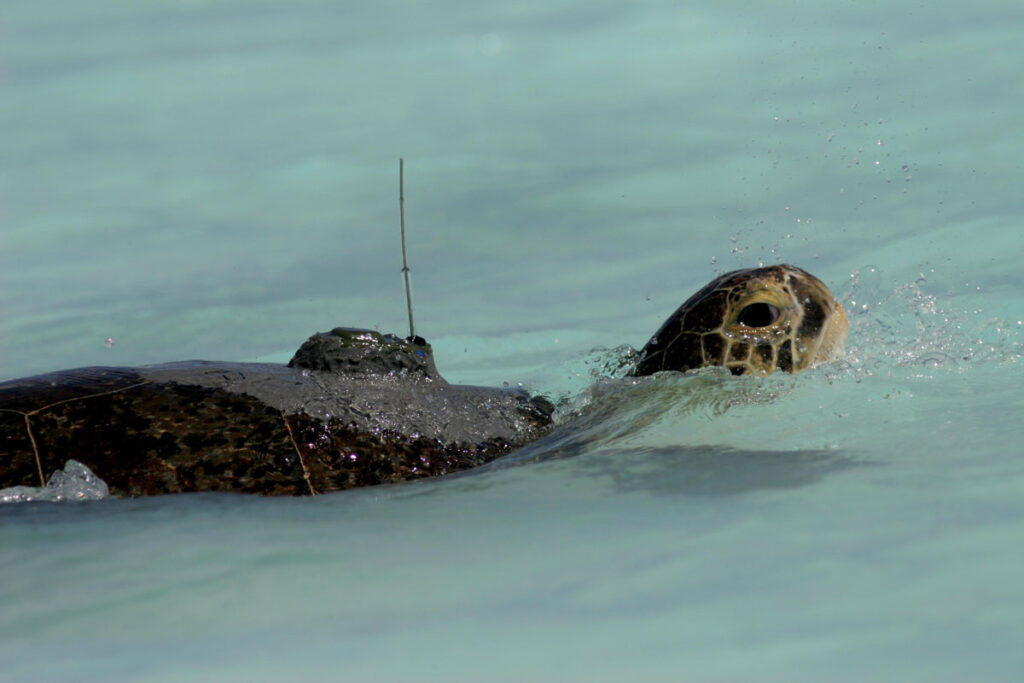[LUM#18] On the turtle menu
It was on the French islands in the Indian Ocean that Jérôme Bourjea, a researcher atIfremer, has been studying the behavior of sea turtles for over 15 years. Adult migration, coastal diets of juveniles, impacts on their health—biologging pierces the shell of these mysterious animals.
Green turtles or hawksbill turtles, the French islands in the Indian Ocean are fortunate to see these great migrants return to their beaches every year. "Reunion Island, Mayotte, and the Scattered Islands are hot spots for sea turtles that come to reproduce before leaving to feed elsewhere," explains Jérôme Bourjea, a researcher at the Marbec marine biology laboratory. To find out where their favorite feeding grounds are, in 2010 scientists equipped around 100 individuals with Argos tags attached to their shells using non-heating epoxy resin, and tracked them through wind and tide for nearly a year.
Turtles hide to eat
"The results were impressive," recalls Jérôme Bourjea. "We were able to observe them spreading out like fireworks: Mozambique, South Africa, Seychelles, Madagascar, Kenya... They are spread throughout the southwestern Indian Ocean!" This is valuable information for the conservation of these endangered species. "It allows us to better manage France's turtle heritage by cooperating with our neighbors, where they migrate to feed."
Building on these initial successes with adults, researchers used biologging to learn more about juvenile turtles that settle on the coast and feed there during the first ten years of their lives. "We see them, but do they always stay in the same place? Do they circle the island? Do they mix?" asks the biologist, who this time used GPS tags to refine their geolocation to within 5 or 10 meters.
Reality turtle
The data collected revealed different feeding strategies among juveniles, depending on the island but also on the individual. "Some turtles are very loyal and will use an area no larger than a football field, probably because they find good food there," explains the researcher. " Others are more exploratory and change areas after a few weeks."
The GPS data was then cross-referenced with maps of the seabed, such as seagrass beds, red algae beds, etc. "It's interesting, but GPS doesn't tell us whether the turtles are eating or sleeping. So we equipped them with cameras, but with a battery life of only two hours per individual, the data is more qualitative than quantitative."
Environmental watchdog
The images nevertheless provided new information about the turtles' feeding strategies as well as their social behavior. "We discovered that they had social interactions that we had previously thought were completely non-existent," explains Jérôme Bourjea, who will be heading to Aldabra, an unspoiled island in the Indian Ocean, in a few days' time to establish the link between diet, turtle health, and the environment, and to demonstrate "that turtles can be true sentinels of the environment."



Find UM podcasts now available on your favorite platform (Spotify, Deezer, Apple Podcasts, Amazon Music, etc.).